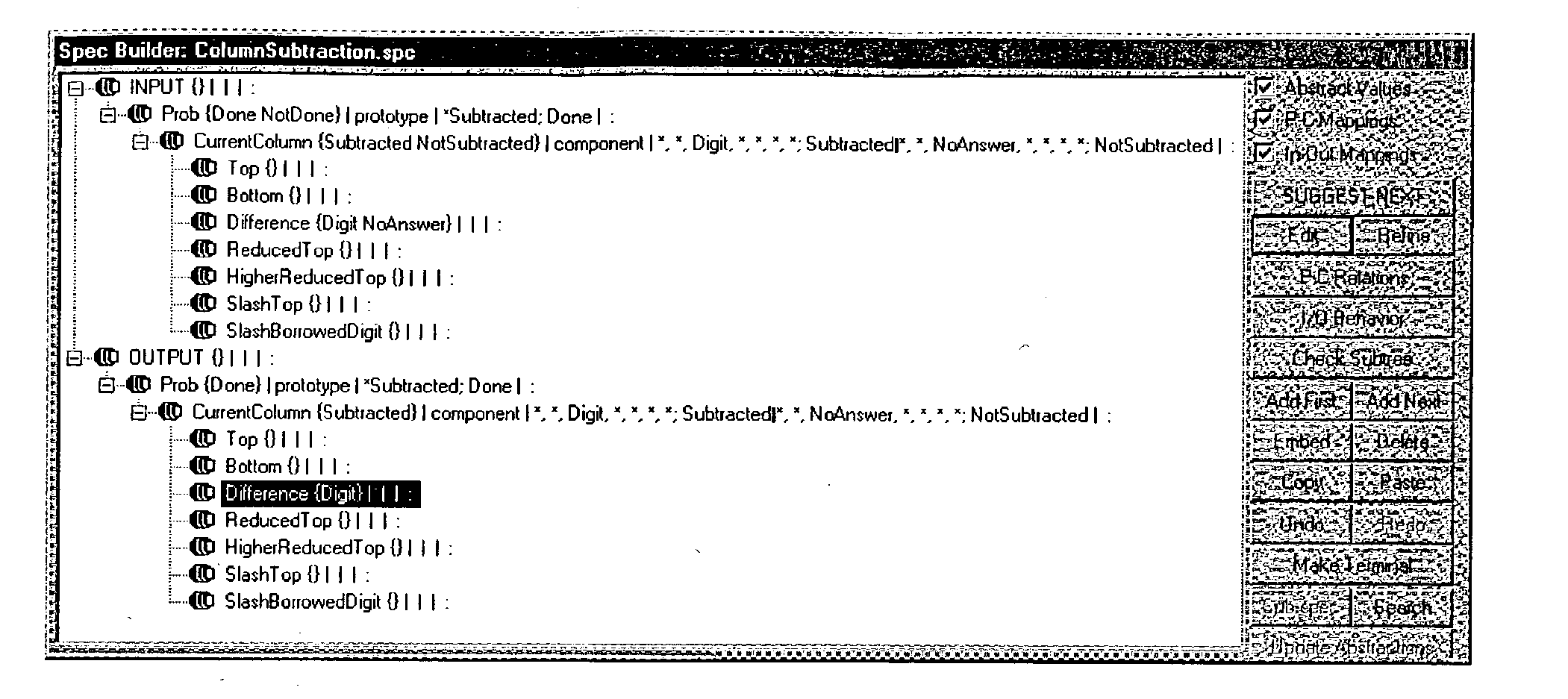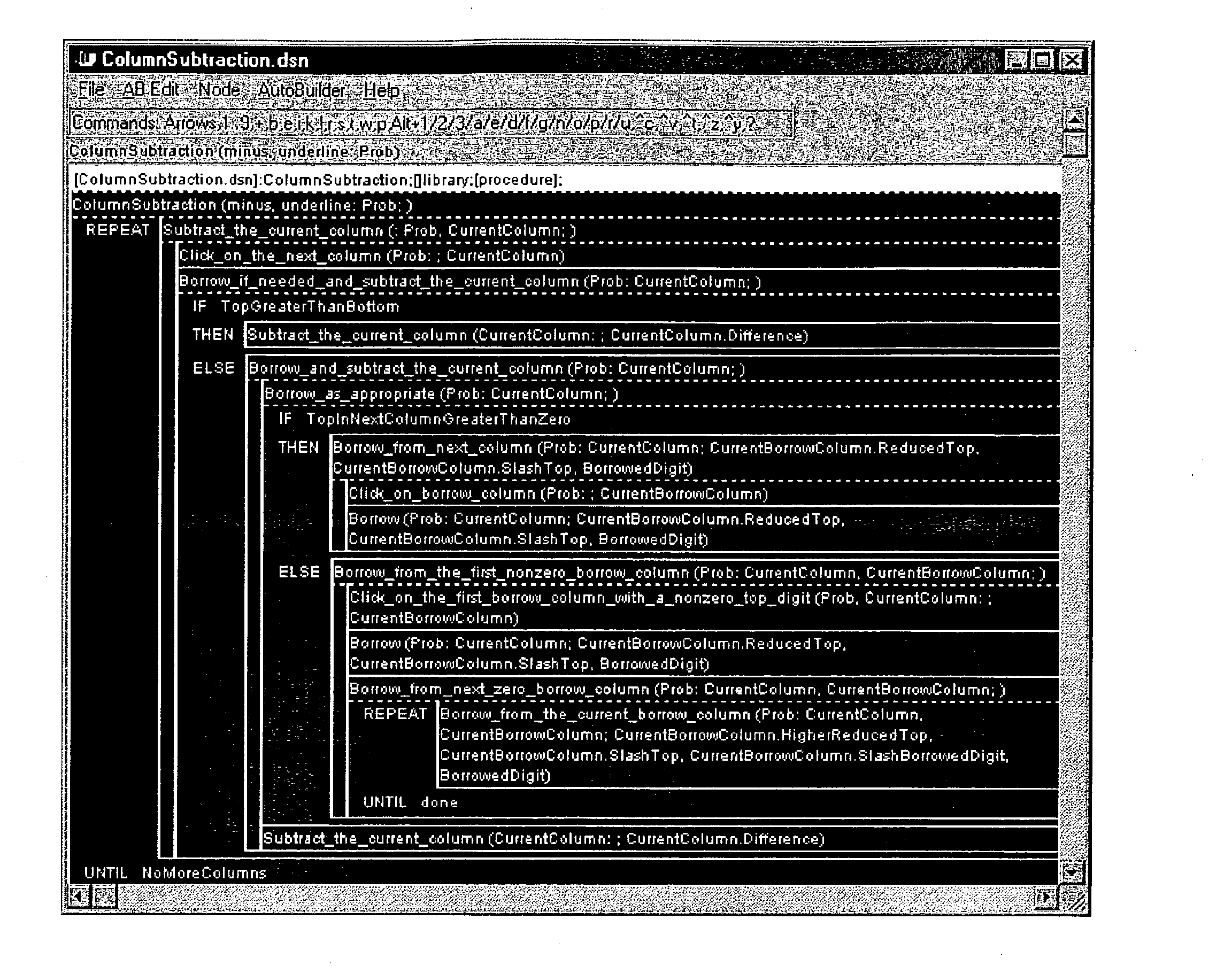Method for Building Highly Adaptive Instruction Based on the Structure as Opposed to the Semantics of Knowledge Representations
a technology of knowledge representation and structure, applied in the field of highly adaptive instruction, can solve the problems of not fully understanding the kind of links and predicates to use, not fully understanding the potential of the potential in practice, and still far from cataloging the kinds of links needed for these semantic hierarchies
- Summary
- Abstract
- Description
- Claims
- Application Information
AI Technical Summary
Problems solved by technology
Method used
Image
Examples
Embodiment Construction
.--The preferred embodiment was implemented using the dialogs shown in FIGS. 1-10 and involves the following:
[0181] Knowledge Representation.--Knowledge Representation is based patented processes to create internally consistent specifications and designs represented as ASTs. The preferred embodiment consists of AutoBuilder, a Blackboard Editor and associated display system and a General Purpose Intelligent Tutor (GPIT). AutoBuilder is a software system, which makes it possible to represent arbitrary content as ASTs at multiple levels of abstraction. As any one skilled in the art knows, ASTs may be represented in any number of formally equivalent ways. Whereas any number of other methods may be used for this purpose, the preferred AutoBuilder embodiment makes it possible to create content ASTs in an unambiguous manner so that each level represents equivalent content. This AutoBuilder representation makes it possible to represent both specifications (i.e., behavior) for the input-outp...
PUM
 Login to View More
Login to View More Abstract
Description
Claims
Application Information
 Login to View More
Login to View More - R&D
- Intellectual Property
- Life Sciences
- Materials
- Tech Scout
- Unparalleled Data Quality
- Higher Quality Content
- 60% Fewer Hallucinations
Browse by: Latest US Patents, China's latest patents, Technical Efficacy Thesaurus, Application Domain, Technology Topic, Popular Technical Reports.
© 2025 PatSnap. All rights reserved.Legal|Privacy policy|Modern Slavery Act Transparency Statement|Sitemap|About US| Contact US: help@patsnap.com



